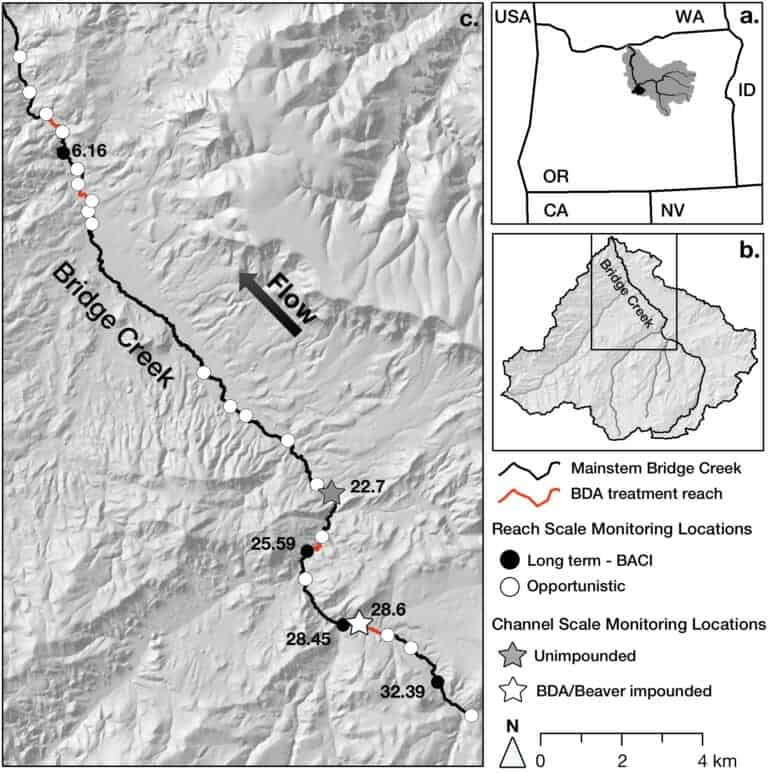Beaver are an integral component of hydrologic, geomorphic, and biotic processes within North American stream systems, and their propensity to build dams alters stream and riparian structure and function to the benefit of many aquatic and terrestrial species. Recognizing this, beaver relocation efforts and/or application of structures designed to mimic the function of beaver dams are increasingly being utilized as effective and cost-efficient stream and riparian restoration approaches.
Despite these verities, the notion that beaver dams negatively impact stream habitat remains common, specifically the assumption that beaver dams increase stream temperatures during summer to the detriment of sensitive biota such as salmonids. In this study, we tracked beaver dam distributions and monitored water temperature throughout 34 km of stream for an eight-year period between 2007 and 2014. During this time the number of natural beaver dams within the study area increased by an order of magnitude, and an additional 4 km of stream were subject to a restoration manipulation that included installing a high-density of Beaver Dam Analog (BDA) structures designed to mimic the function of natural beaver dams. Our observations reveal several mechanisms by which beaver dam development may influence stream temperature regimes; including longitudinal buffering of […]
Full article: Alteration of stream temperature by natural and artificial beaver dams

